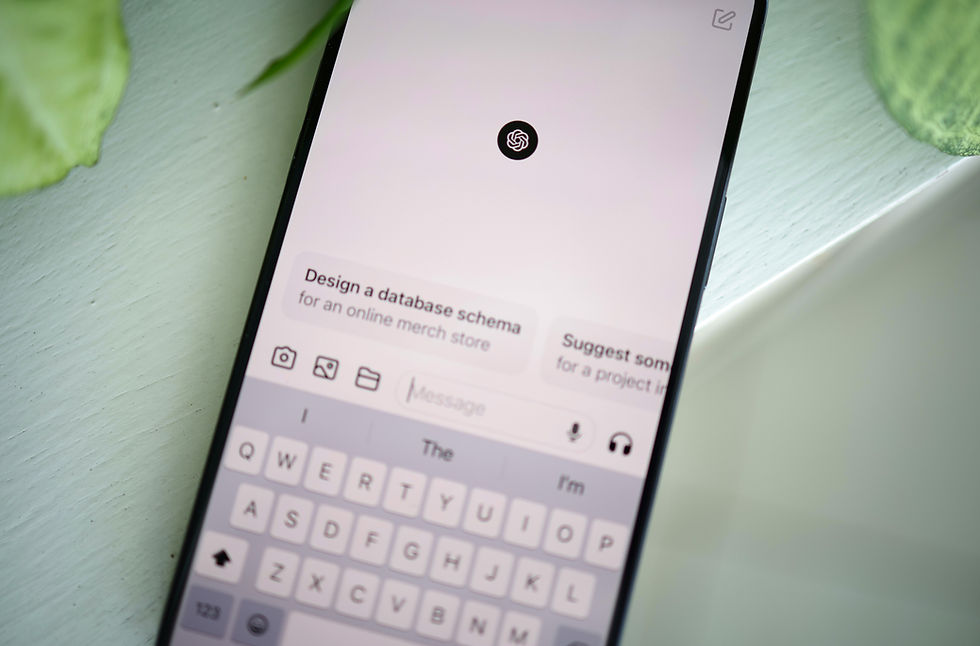ADHD or Popcorn Brain? Why Your Digital Habits Might Be Mimicking a Medical Condition
- hopkinsmanagementl
- Sep 18
- 4 min read

In our hyperconnected world, millions of adults are experiencing something troubling: they can't focus, their minds race from thought to thought, and they feel constantly restless. Sound familiar? If you've been wondering whether you might have ADHD, you're not alone. But before you self diagnose, there’s another possibility to consider.
Popcorn Brain. A term introduced by David M Levy, who’s books include Mindful Tech and No Time To Think, refers to a mental state typified by scattered thoughts, fragmented and attention and a propensity for the mind to swiftly transition from one topic to another, resembling the rapid popping of popcorn kernels in a heated pan.
Understanding the Difference
ADHD (Attention Deficit Hyperactivity Disorder) is a legitimate neurodevelopmental condition that typically manifests in childhood and continues into adulthood. People with ADHD have brains that are wired differently, affecting their ability to regulate attention, impulses and activity levels. It's a medical condition that often requires professional treatment and support.
Popcorn Brain, on the other hand, is what happens when our minds become overstimulated by the constant ping of notifications, the endless scroll of social media and the dopamine hits that come from digital interactions, leaving us feeling scattered and unable to focus.
The tricky part? The symptoms can look remarkably similar.
Why the Confusion Is So Common
Both ADHD and popcorn brain can lead to:
Difficulty concentrating on tasks
Racing thoughts
Restlessness and fidgeting
Trouble completing projects
Mental fatigue
Impulsive behaviour
But here's the key difference: ADHD symptoms are typically present from childhood and occur across all areas of life. Popcorn brain symptoms often develop in adulthood and are directly linked to our digital consumption habits.
Think about it: when did you last experience sustained focus? Was it during a particularly engaging book, a captivating movie or perhaps during a technology free holiday? If you can remember times of natural focus, especially when screens weren't involved, popcorn brain might be the more likely culprit.
The Perfect Storm of Modern Life
Our brains weren't designed for the constant stimulation we now experience. Every notification triggers a small release of dopamine, training our brains to crave the next digital hit. Social media platforms are specifically engineered to capture and hold our attention, using variable reward schedules that are psychologically addictive.
The average person checks their phone 96 times per day - that's once every 10 minutes during waking hours. Each time we switch our attention, our brains have to work harder to refocus, leading to mental fatigue and the scattered feeling so many of us now experience as normal.
Meanwhile, genuine cases of ADHD may be overlooked as people assume their symptoms are just part of modern life. This is why professional evaluation remains crucial when attention difficulties significantly impact daily functioning.
Red Flags That Point to Popcorn Brain
Consider these questions honestly:
Did your attention difficulties begin in adulthood rather than childhood?
Do you focus better when technology isn't around?
Are your symptoms worse on days when you use devices more heavily?
Can you still get absorbed in activities you truly enjoy?
Do you feel an almost compulsive need to check your phone?
If you answered yes to most of these, popcorn brain is likely the issue and the good news is that it's entirely fixable through lifestyle changes.
How to Reset Your Brain
Unlike ADHD, which usually requires long-term support, popcorn brain can often be tackled by reshaping your digital habits. Research shows that people who limit recreational screen time notice better focus and improved mood within just two weeks.
Practical steps include:
The 20-20 Rule: Limit recreational screen time to 20 minutes, twice daily.
Phone free zones: Keep devices out of the bedroom and off the dining table.
Single Tasking: Do one task at a time instead of juggling multiple apps and tabs.
Pomodoro Technique: Work in focused 25 minute bursts with short breaks.
Meditation: Just five minutes daily can retrain your attention span.
Reclaiming Your Attention
The human brain is remarkably plastic. It can form new neural pathways and break old habits with consistent effort. If you're struggling with focus and attention, don't immediately assume you need medical intervention. Consider whether your symptoms might be the result of living in an ‘always on’ digital world.
Your scattered thoughts, inability to concentrate and mental fatigue might not represent a disorder at all. They might simply be your brain's natural response to an unnatural amount of stimulation. By creating boundaries with technology and giving your mind space to rest and focus, you may discover that your attention returns naturally.
In our rush to pathologize every struggle, we sometimes overlook simpler explanations. Before assuming your scattered thoughts mean you have ADHD, consider whether they might reflect your relationship with technology. Sometimes the solution isn’t medication, it’s mindful disconnection.
Your attention is precious. It's time to take it back.
If you’re struggling with distraction, racing thoughts or digital overwhelm, coaching can help you break the cycle. Together we can build personalised strategies to improve your focus and establish healthier digital habits. If you’re ready to reclaim your focus and productivity, get in touch and I will help you work on building a calmer, clearer mind.




Comments